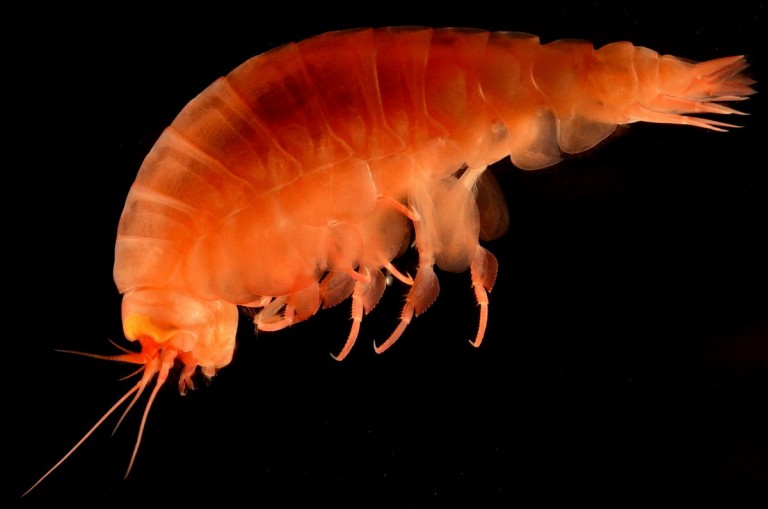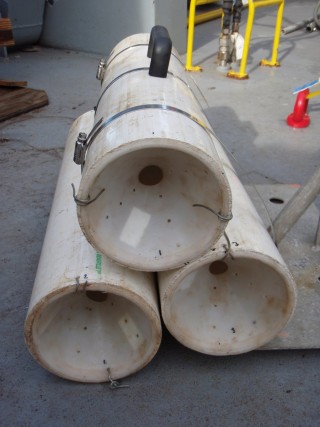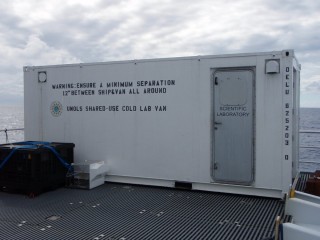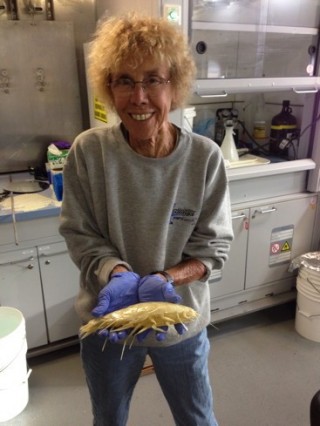
The deep ocean trenches like the Mariana are fascinating places to study evolution. For species to be able to survive and thrive in the extreme environmental conditions of the hadal zone they must have accumulated a whole suite of adaptations, which ultimately will make them very different from their non-deep sea counterparts. Indeed, it has been thought for some time that conditions are so extreme in the hadal zone that individual trenches will host species found nowhere else in the oceans.
Unsolving the mystery with DNA

You can learn an awful lot about evolution in the hadal zone by studying the DNA of the organisms collected from the trenches. On this expedition, that is exactly my role. I focus on the different species of trench amphipods, which are cousins of the beach-hoppers commonly found when you kick over seaweed on the strandline on beaches.
If you compare the exact sequence of the building blocks that make up DNA between different species, you can estimate how evolutionarily distinct they are. From that, you can build up a picture of the evolutionary branch pattern between hadal amphipods and amphipods found anywhere else in the world. That will tell us whether the Mariana amphipods are the same as amphipods found in other trenches or found only here. If they are found to be the same then that begs the obvious question of how individuals are moving over vast swathes of ocean, and how frequently that occurs. Again these are questions that can be answered by looking at DNA sequences.
You can also see where in the genetic blueprint that DNA encodes specific adaptations to life in the hadal zones. The effect of natural selection operating on organisms leaves a characteristic fingerprint on DNA that can be readily identified. By knowing the function of the DNA in a particular region, scientists can better understand the effects of selection and work out the physiological or biochemical pathways through which evolution has honed amphipods to life in the deep sea.

At the sharp end of all of this research is the need to actually get some amphipod samples. We are using simple tube traps that go down with the lander vehicles. These tubes have a funnel at each end and are baited with fish, so the amphipods get attracted in, but then can’t get out. When the landers come back on to the surface, I preserve or freeze the individual amphipods so that when we are back in the lab I can extract DNA from the cells and read its sequence with an automated DNA sequencing machines.
Don’t forget your fleece

So far this expedition is going phenomenally well – we have collected several hundred amphipods from various depths down the trench. These collections range from ones that are just a few mm long right up to the supergiants that reach over 30 cms. The only slight downside to all of this work is that I am required to spend a lot of time in the “ice box”. That is, the mobile laboratory on board that is kept at 4C where samples are preserved once they come on board. It is easy to get quizzical looks from the crew when you routinely wear a thick fleece given it’s 35 C plus out on deck. But that’s a price worth paying to be part of this cruise and involved in such exciting science.

